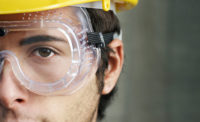Construction workers continue to face some of the highest risks when it comes to injuries in the workplace. One of the most concerning involves traumatic brain injuries (TBI), often caused by falls and being struck by moving vehicles.
According to a 2016 report by the National Institute for Occupational Safety and Health (NIOSH), the construction industry has the highest number of both fatal and nonfatal traumatic brain injuries among U.S. workplaces. Between 2003 and 2010, over 2,200 workers died because of these injuries, which represented 25 percent of all construction fatalities.
Studies show construction workers at highest risk of TBIs
Back in 2011, researchers showed that the construction industry had the highest number of TBIs of any industry in the U.S. They found that nearly 7,300 occupational TBI deaths occurred between 2003 and 2008, and that the construction, transportation, and agriculture industries recorded nearly half of all those. The most common causes were motor vehicle accidents, falls, assaults and violent acts, and contact with objects and equipment.
Falls have recently taken over motor vehicle accidents as the most common cause of work-related TBIs. In the NIOSH study, falls, particularly from roofs, ladders, and scaffolds, led to over half of fatal work-related TBIs. Workers 65 and older were nearly four times more likely to sustain a TBI than workers 25 to 34 years old. Workers employed by smaller organizations, consisting of 20 employees or less, were 2.5 times more likely to die from a TBI than those working for larger organizations.
What is a TBI?
A traumatic brain injury is a type of injury that damages the brain itself and causes it to malfunction. It usually results from a blow to the head or a jolt to the head and body. An object penetrating the skull can also cause a TBI.
How a TBI affects a person depends on its severity, and on where it occurs. A concussion, for example, is classified as a mild TBI. A more severe one can cause death. In between are various stages of severity that can cause mild to severe disabilities. Some potential consequences of a TBI may include amnesia, coma, and death.
Symptoms of a TBI can be tricky, as sometimes they don’t show up for days or weeks after the injury. Confusion, persistent headaches, slow thinking or speaking, sleep changes, increased sensitivity to light and sound, tinnitus, and moodiness are all possible after a TBI.
How employers can reduce risk of TBIs
Hardhats are the first line of defense against TBIs for construction workers. If workers don’t wear them, though, or if the hats are damaged, they will not work as expected. Workers may sometimes think they don’t need hardhats, which is why it’s necessary for employers to provide proper training and safety equipment on the job.
Employers are also responsible for creating a safe environment for workers. That includes erecting guardrails, installing safety netting, and making sure safety harnesses fit workers properly. Those companies who fail to live up to these responsibilities can be held liable in a TBI personal injury lawsuit.
Source: The Legal Examiner http://westvirginialegalexaminer.com



